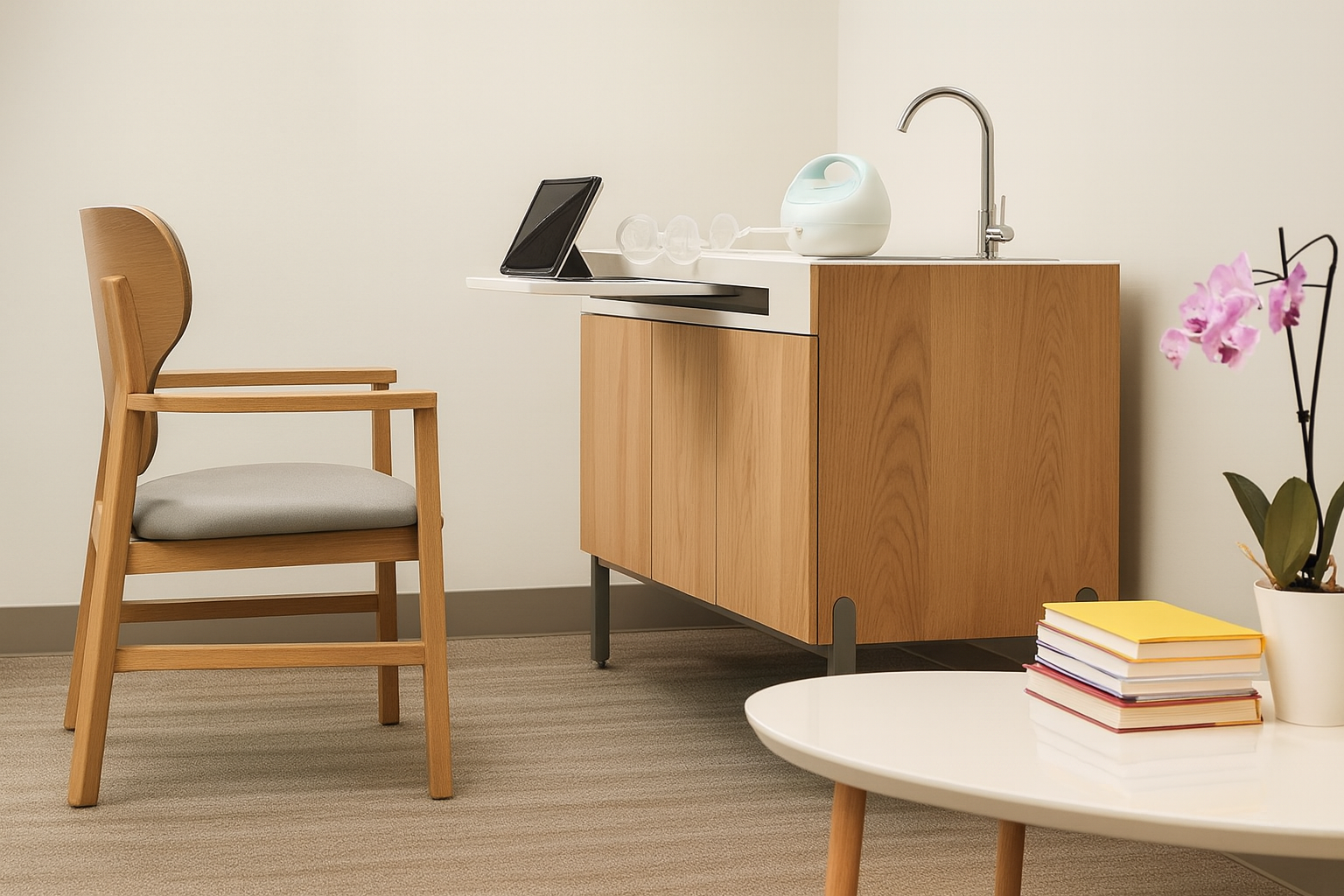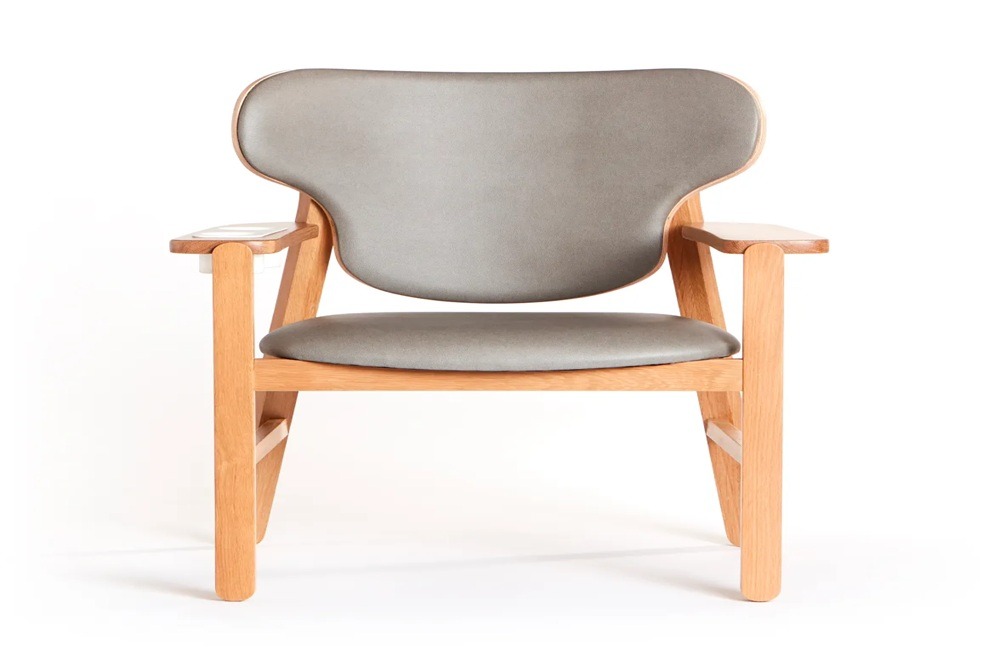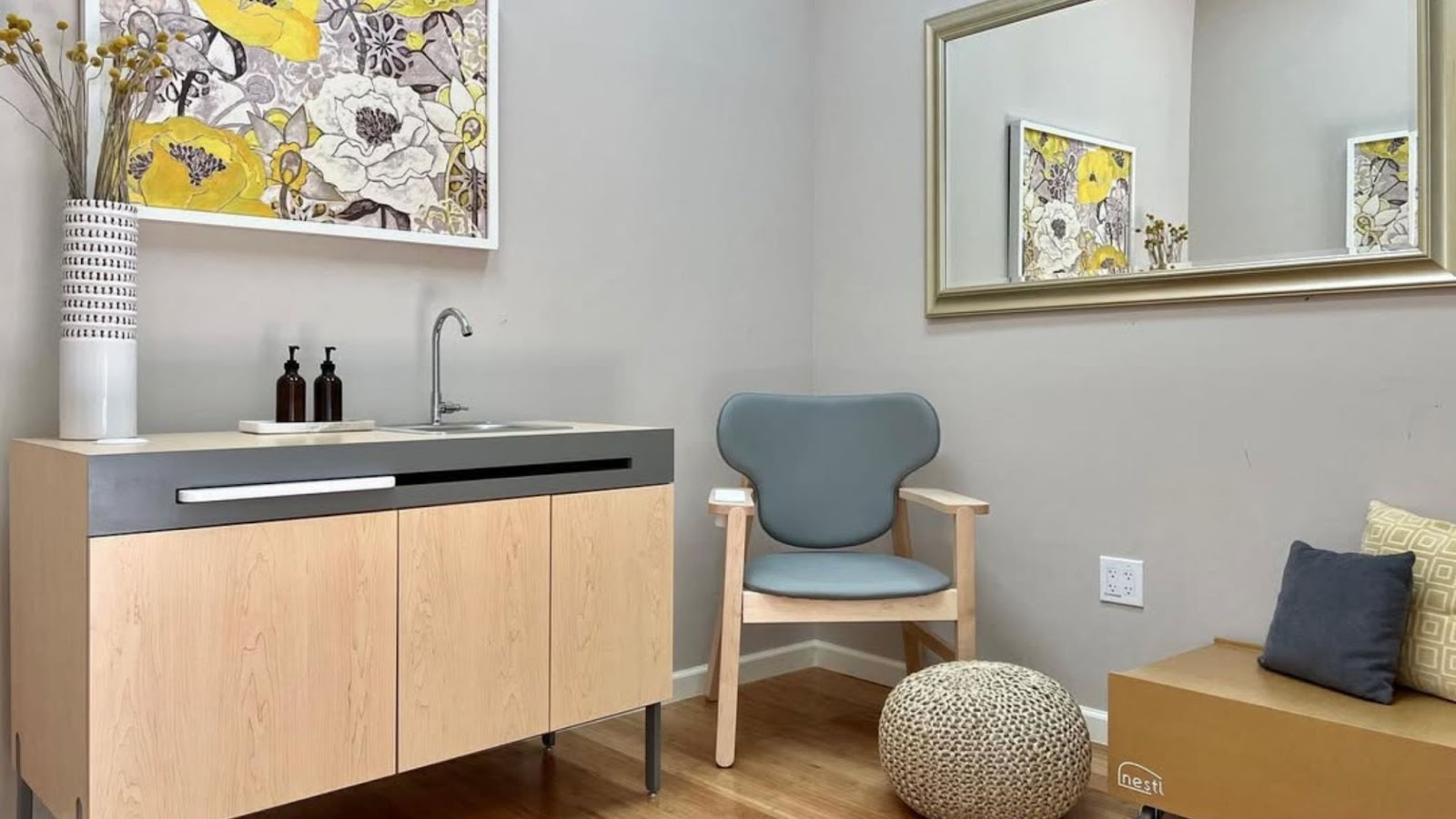You can almost picture it: a quiet corner in a busy office, sunlight spilling over oak wood and brushed metal, the hum of the fridge barely audible beneath the steady tap of a laptop key. Inside this calm little pod, a new mother exhales. She plugs in her breast pump, slides her workstation closer, and starts to work again, comfortably, without having to choose between productivity and care. This is the new face of workplace support, and it’s centered around one idea: the lactation station.
For years, companies promised flexibility but delivered little space; literally. Mothers returning to work often found themselves pumping milk in bathroom stalls or storage closets, balancing laptops on their knees, trying not to spill. In 2025, that image feels outdated, and thankfully so. As corporate America wakes up to the realities of working parenthood, the investment in modern, purpose-built lactation stations like Nessel’s is becoming both a moral and strategic decision.
A Quiet Revolution in Workplace Design
When we began designing Nessel’s Lactation Station, we didn’t just want another piece of furniture. We wanted to change the way workplaces think about care; not as an afterthought but as infrastructure.
It started with a question we kept hearing from HR leaders and new parents alike: What would it take for working mothers to feel genuinely supported at work? The answers were simple, and deeply human; privacy, cleanliness, safety, dignity. So we designed for all of it.
A self-contained plumbing system with a private sink means mothers can wash bottles and pump parts right where they are, no long trips to shared restrooms. The built-in power and USB outlets mean pumps and laptops can run simultaneously, so no one has to choose between their career and their child’s nutrition. There’s a personal fridge inside the station, a sliding workstation for multitasking, and an ergonomic chair that supports postnatal bodies during long days.
The hardware is discreet and practical. At its heart, the Nessel Lactation Station is about restoring comfort, control, and normalcy to something that should have been normalized long ago.
The Business Case: Why Companies Are Paying Attention
What’s striking about 2025 isn’t just how many companies are installing lactation stations; it’s who is. From Fortune 500 firms to startups barely out of Series A, employers across industries are treating this as more than a compliance checkbox. It’s a cultural statement.
Because clarity matters: a lactation station is a dedicated piece of furniture that goes inside a private room provided by the employer for pumping. It tells employees: We see you. We’ve thought about your needs. You belong here.
Retention numbers back it up. Multiple employer programs report strong post-leave retention where lactation support is offered, often in the 83%–94% range, compared with older national benchmarks near ~59%. Productivity rises when stress drops. And in a competitive hiring landscape where flexibility and inclusion define brand reputation, a thoughtfully designed space can be a serious differentiator.
Beyond retention, employers have documented lower absenteeism and healthcare costs when comprehensive lactation support is in place; Cigna’s Working Well Moms program, for example, reported annual healthcare savings along with fewer prescriptions and reduced time lost.
That’s why we’re seeing lactation stations installed not only in offices but also in hospitals, universities, law firms, and even airports. The workplace of 2025 doesn’t stop at ergonomic keyboards and breakout rooms; it extends into the deeply personal, the human.
Inside the Design: Where Function Meets Empathy
The secret behind Nessel’s Lactation Station is not any single feature; it’s how everything works together quietly and intuitively.
Let’s take a moment to walk through the experience.
You step into a space that feels almost like a small studio. There’s warm oak wood and a subtle white finish that reflects light without glare. A softly curved ergonomic chair cradles your back and hips, keeping posture aligned through each pumping session. The desk slides easily; you can pull it close while writing an email, then push it back when it’s time to clean equipment.
A small stainless-steel sink gleams beside the workstation, part of our self-contained plumbing system that keeps everything hygienic and private. No need to trek down hallways balancing fragile bottles. The water tanks refill easily and drain discreetly. It’s functional but almost spa-like in its simplicity.
Inside the station is a quiet in-built mini-fridge. It’s private, accessible, and reliable; the kind of small assurance that removes one big daily worry. Mothers can safely store breast milk until it’s time to head home. Next to it, discreet cup holders keep bottles stable, preventing the small but devastating tragedies of spilled milk.
And yes, there’s power everywhere you need it. Built-in outlets and USB ports mean you can charge your pump, your phone, even your laptop, all without stretching cords across the floor.
The result is not just a space, but a rhythm; one that respects the multitasking, resilient pace of motherhood at work.
The Emotional Architecture of Space
We often talk about design in terms of form and function, but lactation spaces remind us there’s a third dimension: feeling.
A pumping room isn’t just about ergonomics or compliance. It’s about emotion; how it feels to walk in and exhale, how it feels to know you’re not an afterthought. Many new mothers describe those first weeks back at work as a balancing act between identity and responsibility. A thoughtful lactation station gives that balance a physical home.
We’ve watched it happen in real time. During an installation last year at a tech company in Austin, one employee peeked in and whispered, “I wish I’d had this with my first.” She wasn’t talking about the equipment, though she appreciated it; she meant the message it sent. That she mattered enough for the company to redesign part of its space for her.
That’s the quiet power of design with empathy. It changes culture without a memo.
Beyond Compliance: The PUMP Act and The Future of Inclusive Workspaces
Federal requirements have evolved. Under the Providing Urgent Maternal Protections (PUMP) Act, most nursing employees are entitled to reasonable break time and a private space, not a bathroom, to pump at work for up to one year after childbirth. The space must be shielded from view, free from intrusion, and available as needed. Fast forward to 2025, and the difference is striking. Progressive organizations aren’t asking what’s the minimum required; they’re asking what’s the best possible experience?
And that’s where Nessel has found its purpose. We don’t build compliance boxes; we build living systems. Modular, portable, and aesthetically aligned with modern interiors. Our lactation stations are designed to blend seamlessly into existing environments while offering complete functionality. They can be set up in open offices, converted conference rooms, or even temporary workspaces. Use is contingent on the room itself meeting legal privacy and accessibility requirements.
We’ve learned that when companies invest in this kind of thoughtful infrastructure, they’re not just checking a policy requirement. They’re signaling a belief that care is compatible with ambition, that parenthood belongs inside the walls of innovation.
How It’s Changing the Conversation About Motherhood and Work
The most interesting part of this shift isn’t just architectural; it’s cultural.
You can see it in how HR teams talk about “parenting inclusion” instead of “return-to-work programs.” You can see it in the Slack channels where new parents share photos of their stations like they’re proud of their workspace again. You can see it in the way design itself has become a form of advocacy; a way to challenge the old binary of work versus family.
As more women move into leadership roles, the visibility of these spaces matters even more. They normalize care as part of corporate life, not as an exception to it. And for younger generations entering the workforce, it sets a new baseline: workplaces that don’t just permit life’s realities but accommodate them beautifully.
At Nessel, we’ve been inspired to see how quickly this mindset spreads. Once one company installs a lactation station, others nearby take notice. It becomes a quiet form of peer pressure, the best kind; the kind rooted in empathy.
A Note on Design Philosophy
Our design team talks a lot about “micro-luxury.” It doesn’t mean ornate or overly lavish finishes. It means that every inch of the station should feel considered, intuitive, and human. The chair that doesn’t squeak when you shift. The smooth glide of the workstation. The soft-close cabinetry that never slams. The way light reflects off wood and metal creates a sense of calm.
We wanted the Nessel Lactation Station to be as satisfying to use as a well-designed phone or car; not just functional, but quietly delightful.
Because the truth is, when you care about the small details, you send a big message: working mothers deserve design excellence too.
The Real ROI: Humanity
In a world obsessed with metrics, it’s worth saying plainly that some investments can’t be measured only in numbers.
Sure, you can calculate retention rates, engagement scores, or employer brand rankings. But the deeper return comes in the form of trust. Employees who feel seen, supported, and respected bring their whole selves to work. They innovate more freely, collaborate more deeply, and stay longer.
The lactation station is a small physical symbol of that trust, a quiet investment in people who are building both careers and families, often simultaneously. It’s the kind of infrastructure that tells a bigger story about who we are as organizations, and who we want to become.
Closing Thoughts
Corporate America is investing in lactation stations, but maybe not for the reasons you’d expect. It’s not just about policy or optics. It’s about progress, humankind.
And if we get it right, someday soon, a new mother won’t think twice about where she’ll pump at work. She’ll just step into a space designed with care, open her laptop, and get on with her day, supported, respected, and part of a workplace that finally feels whole.
That’s the future Nessel is building, one station at a time.
%404x.png)




%404x.png)
